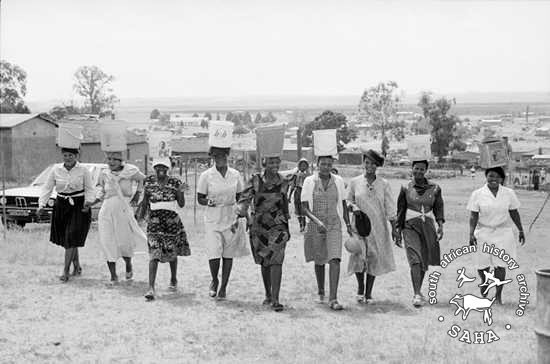Black women in South Africa symbolised strength, struggle and endurance
They looked after the children and worked in the fields to produce food for their families. They often spent a large amount of their day walking to fetch water as there was no supply in their rural villages. They were forced to do this without the support of men and in increasingly difficult conditions.
In the cities, women faced discrimination from the white government authorities who did not want women in the urban areas. Because women tended to settle permanently in the urban areas, the government saw them as a threat to their vision of white cities where black people worked temporarily before returning to the rural areas. Life for women in the cities was a struggle for survival.
Nevertheless, women made a place for themselves in the cities. Formal work was often difficult to find. Up until the mid-1930s, black men and not women worked as domestic servants. So women were forced to work in the informal sector. They found work as washerwomen or selling goods as hawkers.
Others brewed beer, which was considered illegal, and sold the beer to workers on the weekends in lively shebeens. Music and dance became part of this new urban culture, made possible by women. In this way, women managed to survive and earn money to send back to the rural areas for the care of the children.
EXHIBITIONS IN THE CLASSROOM
Visualising the past
Look carefully at the photographs on this page and then answer the questions.
- Identify how women are represented in each of these three photographs.
- Provide a caption or a heading for each photograph.
- Which photograph has the most impact on you? Explain your answer.
Making connections between past and present
Think about the lives of black women today and in the past.
- Do you think the role of women has changed if:
- - women still live in rural areas?
- - women live in poor informal settlements around the cities?
- - women live in the suburbs or wealthier parts of the cities?
- How would you explain these changes or continuities?





